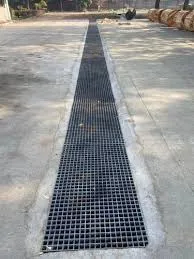
-
 Afrikaans
Afrikaans -
 Albanian
Albanian -
 Amharic
Amharic -
 Arabic
Arabic -
 Armenian
Armenian -
 Azerbaijani
Azerbaijani -
 Basque
Basque -
 Belarusian
Belarusian -
 Bengali
Bengali -
 Bosnian
Bosnian -
 Bulgarian
Bulgarian -
 Catalan
Catalan -
 Cebuano
Cebuano -
 China
China -
 China (Taiwan)
China (Taiwan) -
 Corsican
Corsican -
 Croatian
Croatian -
 Czech
Czech -
 Danish
Danish -
 Dutch
Dutch -
 English
English -
 Esperanto
Esperanto -
 Estonian
Estonian -
 Finnish
Finnish -
 French
French -
 Frisian
Frisian -
 Galician
Galician -
 Georgian
Georgian -
 German
German -
 Greek
Greek -
 Gujarati
Gujarati -
 Haitian Creole
Haitian Creole -
 hausa
hausa -
 hawaiian
hawaiian -
 Hebrew
Hebrew -
 Hindi
Hindi -
 Miao
Miao -
 Hungarian
Hungarian -
 Icelandic
Icelandic -
 igbo
igbo -
 Indonesian
Indonesian -
 irish
irish -
 Italian
Italian -
 Japanese
Japanese -
 Javanese
Javanese -
 Kannada
Kannada -
 kazakh
kazakh -
 Khmer
Khmer -
 Rwandese
Rwandese -
 Korean
Korean -
 Kurdish
Kurdish -
 Kyrgyz
Kyrgyz -
 Lao
Lao -
 Latin
Latin -
 Latvian
Latvian -
 Lithuanian
Lithuanian -
 Luxembourgish
Luxembourgish -
 Macedonian
Macedonian -
 Malgashi
Malgashi -
 Malay
Malay -
 Malayalam
Malayalam -
 Maltese
Maltese -
 Maori
Maori -
 Marathi
Marathi -
 Mongolian
Mongolian -
 Myanmar
Myanmar -
 Nepali
Nepali -
 Norwegian
Norwegian -
 Norwegian
Norwegian -
 Occitan
Occitan -
 Pashto
Pashto -
 Persian
Persian -
 Polish
Polish -
 Portuguese
Portuguese -
 Punjabi
Punjabi -
 Romanian
Romanian -
 Russian
Russian -
 Samoan
Samoan -
 Scottish Gaelic
Scottish Gaelic -
 Serbian
Serbian -
 Sesotho
Sesotho -
 Shona
Shona -
 Sindhi
Sindhi -
 Sinhala
Sinhala -
 Slovak
Slovak -
 Slovenian
Slovenian -
 Somali
Somali -
 Spanish
Spanish -
 Sundanese
Sundanese -
 Swahili
Swahili -
 Swedish
Swedish -
 Tagalog
Tagalog -
 Tajik
Tajik -
 Tamil
Tamil -
 Tatar
Tatar -
 Telugu
Telugu -
 Thai
Thai -
 Turkish
Turkish -
 Turkmen
Turkmen -
 Ukrainian
Ukrainian -
 Urdu
Urdu -
 Uighur
Uighur -
 Uzbek
Uzbek -
 Vietnamese
Vietnamese -
 Welsh
Welsh -
 Bantu
Bantu -
 Yiddish
Yiddish -
 Yoruba
Yoruba -
 Zulu
Zulu
FGD Scrubber Technologies for Effective Pollution Control and Environmental Protection Solutions
Understanding FGD Scrubbers Key Components and Benefits
Flue Gas Desulfurization (FGD) scrubbers are crucial technologies used in various industrial processes to reduce sulfur dioxide (SO2) emissions from power plants and other facilities. As regulations around air quality continue to tighten, the importance of effective FGD systems has never been greater. In this article, we will explore how FGD scrubbers work, their different types, and the significant benefits they provide.
How FGD Scrubbers Work
The primary function of FGD scrubbers is to remove SO2 from the flue gas before it is released into the atmosphere. The process generally involves two main stages absorption and reaction.
1. Absorption The flue gas, containing SO2, passes through a scrubber unit where it is contacted with a liquid reagent. This liquid is typically a calcium-based solution, like limestone or lime, which acts as an absorbent. As the flue gas bubbles through this solution, the SO2 is absorbed and converted into a different chemical form.
2. Chemical Reaction After absorption, the absorbed SO2 undergoes a series of chemical reactions, primarily forming calcium sulfite or calcium sulfate (gypsum). The formation of gypsum is significant because it can be recycled or utilized in various applications, including construction and manufacturing.
Types of FGD Scrubbers
There are several types of FGD scrubbers, each suited for specific applications and technologies
- Wet Scrubbers The most common type, wet scrubbers continuously spray a scrubber liquid into the flue gas stream. They are highly efficient and can remove over 90% of SO2 emissions.
- Dry Scrubbers These systems use a dry reagent, such as powdered lime, instead of liquid. Dry scrubbers can be more compact and require less water, making them suitable for facilities with water scarcity.
fgd scrubber

- Semi-Dry Scrubbers A hybrid approach, semi-dry scrubbers use a mixture where some water is present, allowing for some moisture in the process while also minimizing liquid waste.
Benefits of FGD Scrubbers
1. Regulatory Compliance FGD scrubbers enable power plants and industrial facilities to comply with stringent air quality regulations. By effectively reducing SO2 emissions, these technologies help maintain air quality standards.
2. Environmental Protection The reduction of SO2 not only helps prevent acid rain, which can damage ecosystems and infrastructure, but also contributes to the overall improvement of air quality. This, in turn, has positive effects on public health by reducing respiratory illnesses associated with air pollution.
3. Resource Recovery As mentioned earlier, the by-product of the scrubbing process, gypsum, can be reused in various industries. This not only minimizes waste but also provides a secondary source of revenue for facilities.
4. Versatility FGD scrubbers can be integrated into existing power plants or designed for new facilities, making them a flexible solution for a range of applications.
5. Economic Efficiency Despite the initial installation costs, FGD systems often lead to long-term savings through enhanced energy efficiency and reduced regulatory fines. The technology can also improve the overall efficiency of the combustion process.
Conclusion
FGD scrubbers represent a vital technology in the battle against air pollution. By removing harmful sulfur dioxide from waste gases, these systems not only enhance compliance with environmental regulations but also contribute to a sustainable future. As industries continue to evolve, innovations in FGD technology will likely emerge, promising even greater efficiency and effectiveness in protecting our environment.









